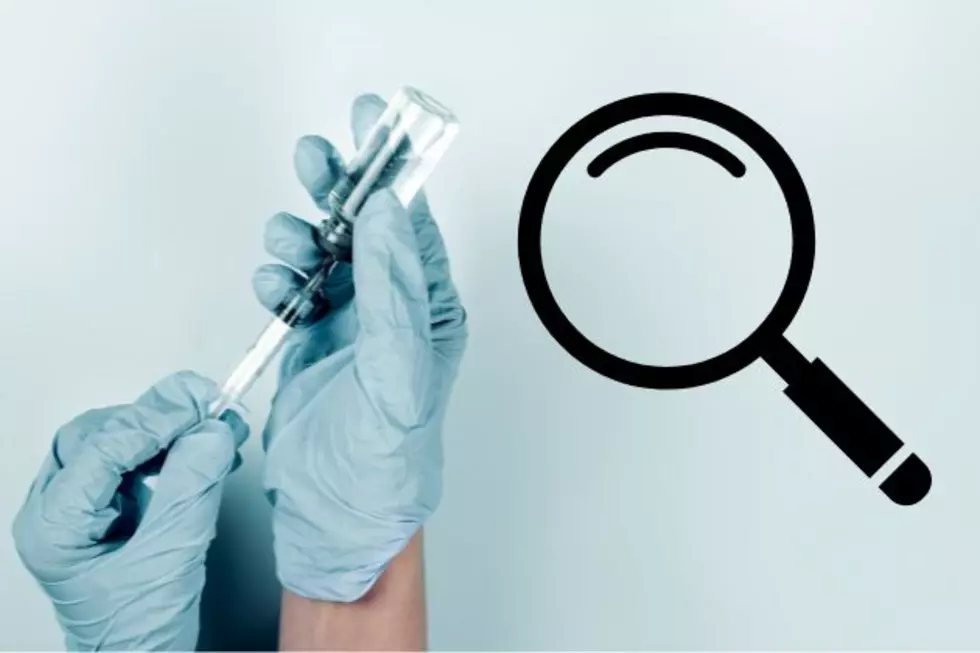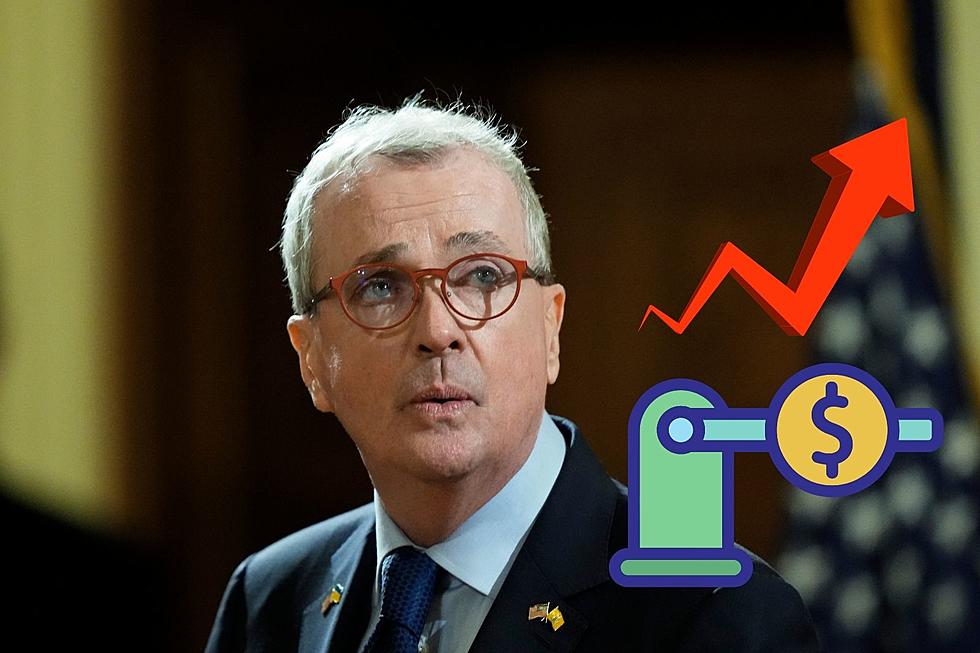
If we’re listening to science, it’s time to unmask NJ (Opinion)
I’ve been writing and speaking out for months on the overreaction to coronavirus and the unnecessary and, in some cases, irreparable harm caused to the economy and public services. We literally went from government telling us to flatten the curve so we wouldn’t overwhelm our health care system to the never-ending social distance and masked "new normal."
At the height of the pandemic in late March and early April, the orders were to stay home and avoid public places in order to stop the spread. Of course, reality set in and nothing you did was likely to have helped as epidemiologists around the country and work from the Bronx to Bakersfield and everywhere in between admitted that the virus spread so fast, it was going to reach you. Judy Persechillli, the NJ health commissioner, admitted that pretty much everyone in NJ was going to get it, including her. The Stanford epidemiologists were clear about how many millions caught the virus before any shutdown and most people would be fine. The pull quote:
The epidemic started in China sometime in November or December. The first confirmed U.S. cases included a person who traveled from Wuhan on Jan. 15, and it is likely that the virus entered before that: Tens of thousands of people traveled from Wuhan to the U.S. in December. Existing evidence suggests that the virus is highly transmissible and that the number of infections doubles roughly every three days. An epidemic seed on Jan. 1 implies that by March 9 about six million people in the U.S. would have been infected. As of March 23, according to the Centers for Disease Control and Prevention, there were 499 Covid-19 deaths in the U.S. If our surmise of six million cases is accurate, that’s a mortality rate of 0.01%, assuming a two week lag between infection and death. This is one-tenth of the flu mortality rate of 0.1%. Such a low death rate would be cause for optimism. - Eran Bendavid and Jay Bhattacharya from the wsj.com article
Months later, the official death toll topped 100,000. If millions contracted the virus in January and this virus spreads exponentially faster than the flu, then the projection on mortality rate seems accurate. More than that, we know that approximately 40% of the reported deaths from COVID-19 are from elderly, vulnerable nursing home and long-term care patients. If there is a takeaway here, government clearly failed in places like New Jersey and New York to protect the most vulnerable.
Florida, by contrast, which only went through a temporary, later and shorter shutdown, lost less than 3,000 people. And Florida has a much higher number and percentage of elderly vulnerable people than New Jersey and New York. We also know that some states padded the numbers, adding in "probable" COVID deaths and people who were never tested to the count. You have to ask yourself why. Why pad the numbers if the disease is so bad that hundreds of thousands, maybe more, would die without shutdowns? Why pad the numbers if our goal is to treat the sick and make sure that we don’t overwhelm the health care system? Is there another agenda at play here? Power? Money? I’ll leave that up to you to decide.
The head of Emergency Medicine at St. Barnabas in the Bronx, one of the hardest-hit places in the world, admitted that the virus peaked and slowed on April 7. That conclusion was based on actual evidence of hospital admissions, deaths and discharges. He was clear that he doubted social distancing had the significant impact touted by the media as in his area, it was nearly impossible to be distant, yet the virus curve flattened anyway. And most people were not walking around with masks outside of the hospital setting.
Finally, COVID-19 is more prevalent than we think. Many New Yorkers already have the COVID-19 infection, whether they are aware of it or not. As of today, over 43 percent of those tested are positive in The Bronx. We are developing a significant degree of natural herd immunity. Distancing works, but I am skeptical that it is playing as predominant a role as many think. - Daniel G. Murphy from the nypost.com article
What’s even more troubling is that social media, instead of being a platform for the exchange of ideas as the media giants claim, have become complicit in the one-sided message from politicians and state health officials justifying the continued lockdowns. Dr. Dan Erickson from Bakersfield, California held a press conference and discussed the low mortality rate based on his experience as a doc and the science behind calculating the number of infections, but the video of the press conference was taken down. Apparently YouTube does not tolerate any dissent to the group think pushed by politicians. The good news is that the doc has been a regular guest on Fox News, with his latest interview on June 10 with Tucker Carlson.
Then there’s the evidence of the success in Sweden, with no lockdown and limited social distancing. Fewer than 5,000 deaths, and although that is far greater a number than their Scandinavian neighbors, it’s far lower than New Jersey, which has almost the same number of people. The key findings in Sweden? Kids simply are not in danger of COVID-19. The schools remained open and the people who were mostly impacted were the sick and elderly. Same as here.
As I have said before, New Jersey was entering a social distant shutdown naturally through the actions of citizens unsure about how bad the pandemic would be if the governor, instead of panicking and shutting everything down, had presented the intelligent and thoughtful information from doctors and epidemiologists. New Jersey would have been on the road to recovery and returned to normal by now. By contrast, Sweden recognized the need for social responsibility, as advised by the CDC here before they become political, and are closing in on herd immunity.
Other major European countries have followed strict lockdown measures but have similarly suffered large death tolls and economic downturns. France, Spain and Italy have suffered almost 90,000 deaths between them.
While Sweden’s death toll is high, at more than 3,800, compared with other Scandinavian countries, it is on a slow but steady downward trajectory.
If herd immunity is achieved across the country Sweden will be in a strong position to return to relative normality. By comparison, other countries could face further lockdowns to prevent the virus spreading until a vaccine is found.
With a mortality rate three times higher than that of Denmark and seven times higher than in Finland, however, people have questioned Sweden’s strategy.
But Prof Giesecke, an internationally recognised expert who advises the World Health Organisation, has described the Swedish strategy as the “best in the world”.
“You’re pushing your cases and deaths into the future, they are not disappearing,” he told New Zealand media.
Fellow epidemiologist Prof Julian Peto, of the London School of Hygiene & Tropical Medicine, told The National: “Giesecke has been right all along.” - Thomas Harding from thenational.ae article
The strategy is being embraced by some as the only way to combat a virus for which there is no vaccine. Denmark telling people to unmask, Switzerland telling kids to hug their grandparents. The world is coming back to normal. Do we really need lessons in common sense and civil liberty from Europe? When will New Jersey wake up and embrace the real science and put down the mask?

The post above reflects the thoughts and observations of New Jersey 101.5 talk show host Bill Spadea. Any opinions expressed are Bill's own. Bill Spadea is on the air weekdays from 6 to 10 a.m., talkin’ Jersey, taking your calls at 1-800-283-1015.
More from New Jersey 101.5:
READ MORE: NJ grocery store alternatives
More From New Jersey 101.5 FM









